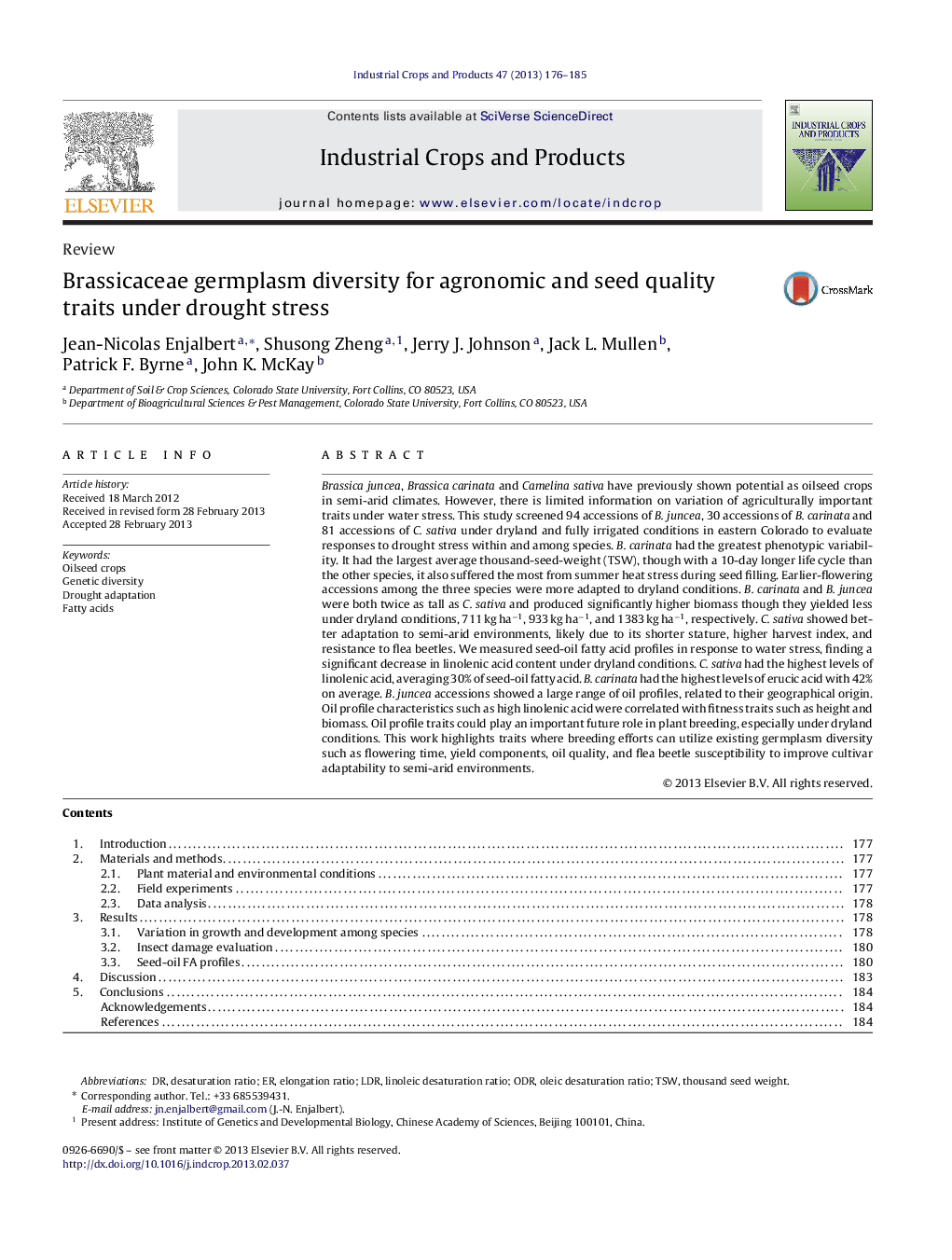| کد مقاله | کد نشریه | سال انتشار | مقاله انگلیسی | نسخه تمام متن |
|---|---|---|---|---|
| 4513550 | 1624862 | 2013 | 10 صفحه PDF | دانلود رایگان |

• We screened germplasm of three oilseeds crops for adaptation to drought stress.
• Large phenotypic and genetic diversity was observed for seed yield and oil quality.
• Camelina was best adapted to semi-arid environments.
Brassica juncea, Brassica carinata and Camelina sativa have previously shown potential as oilseed crops in semi-arid climates. However, there is limited information on variation of agriculturally important traits under water stress. This study screened 94 accessions of B. juncea, 30 accessions of B. carinata and 81 accessions of C. sativa under dryland and fully irrigated conditions in eastern Colorado to evaluate responses to drought stress within and among species. B. carinata had the greatest phenotypic variability. It had the largest average thousand-seed-weight (TSW), though with a 10-day longer life cycle than the other species, it also suffered the most from summer heat stress during seed filling. Earlier-flowering accessions among the three species were more adapted to dryland conditions. B. carinata and B. juncea were both twice as tall as C. sativa and produced significantly higher biomass though they yielded less under dryland conditions, 711 kg ha−1, 933 kg ha−1, and 1383 kg ha−1, respectively. C. sativa showed better adaptation to semi-arid environments, likely due to its shorter stature, higher harvest index, and resistance to flea beetles. We measured seed-oil fatty acid profiles in response to water stress, finding a significant decrease in linolenic acid content under dryland conditions. C. sativa had the highest levels of linolenic acid, averaging 30% of seed-oil fatty acid. B. carinata had the highest levels of erucic acid with 42% on average. B. juncea accessions showed a large range of oil profiles, related to their geographical origin. Oil profile characteristics such as high linolenic acid were correlated with fitness traits such as height and biomass. Oil profile traits could play an important future role in plant breeding, especially under dryland conditions. This work highlights traits where breeding efforts can utilize existing germplasm diversity such as flowering time, yield components, oil quality, and flea beetle susceptibility to improve cultivar adaptability to semi-arid environments.
Journal: Industrial Crops and Products - Volume 47, May 2013, Pages 176–185